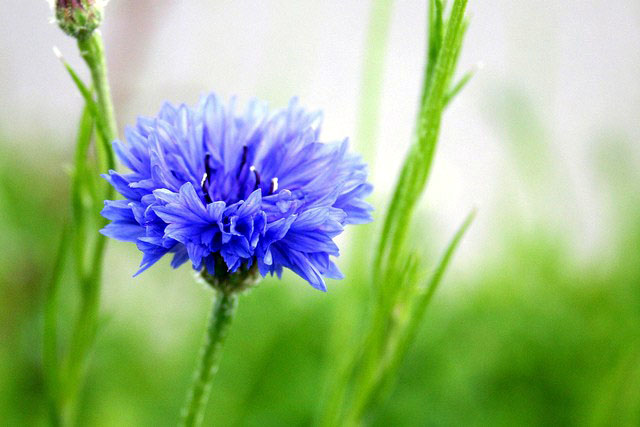
The Yaguruma-giku (cornflowers) in the park have bloomed. They will continue to bloom through the summer after this. Amidst the delayed cherry blossoms, the long-awaited blue sky serves as a vibrant backdrop for their cornflower blue. Cornflower is the English name for the flower known as “Yaguruma-giku” in Japanese. Originating as a weed in wheat fields in southeastern Europe and western Asia, it earned its name from its presence among grains. Its vivid bluish-purple hue gave rise to the term “cornflower blue,” representing the color of the finest sapphires. Yaguruma-giku are also designated as national flowers in countries like the Federal Republic of Germany and the Republic of Estonia. Furthermore, they hold historical significance, having been discovered in the tomb of the ancient Egyptian pharaoh Tutankhamun. In ancient Egypt, blue flowers were believed to ward off evil, and they were placed on the chest of the king’s mummy. Subsequently, the blue flowers of Yaguruma-giku became symbols of Romanticism and were used in patterns like Marie Antoinette’s porcelain tableware design called “Petit Bouquet.” Introduced to Japan during the Meiji era, they were named “Yaguruma-giku” for their resemblance to the spinning tops mounted on poles for Koinobori, or carp streamers.
公園の矢車菊が咲きました。これから夏にかけて咲き続けます。桜の開花が遅れる中,久しぶりの青空を背景にそのコーンフラワーブルーが鮮やかです。コーンフラワーとは矢車菊の英名。ヨーロッパ東南部や 西アジアの麦畑の中に 、雑草として咲いていたことからこの名が付きました。その青紫色の美しさから、最高級のサファイアの色味を表す言葉として生まれたのがコーンフラワーブルーです。矢車菊はドイツ連邦共和国やエストニア共和国などの国花にもなっています。また古くは、古代エジプトの ツタンカーメン王の 墓からも発見された 由緒ある花です。 古代エジプトでは 青い花が魔除けとされ、 王様のミイラの 胸のところに飾られました。その後も矢車菊の青い花はロマン主義の象徴とされたり、マリー・アントワネットの洋食器の『小花散らし』の模様に使われたりしました。日本には明治時代に移入され、鯉のぼりの柱の先につける矢車に似ていることから 「矢車菊」の名が付きました。
